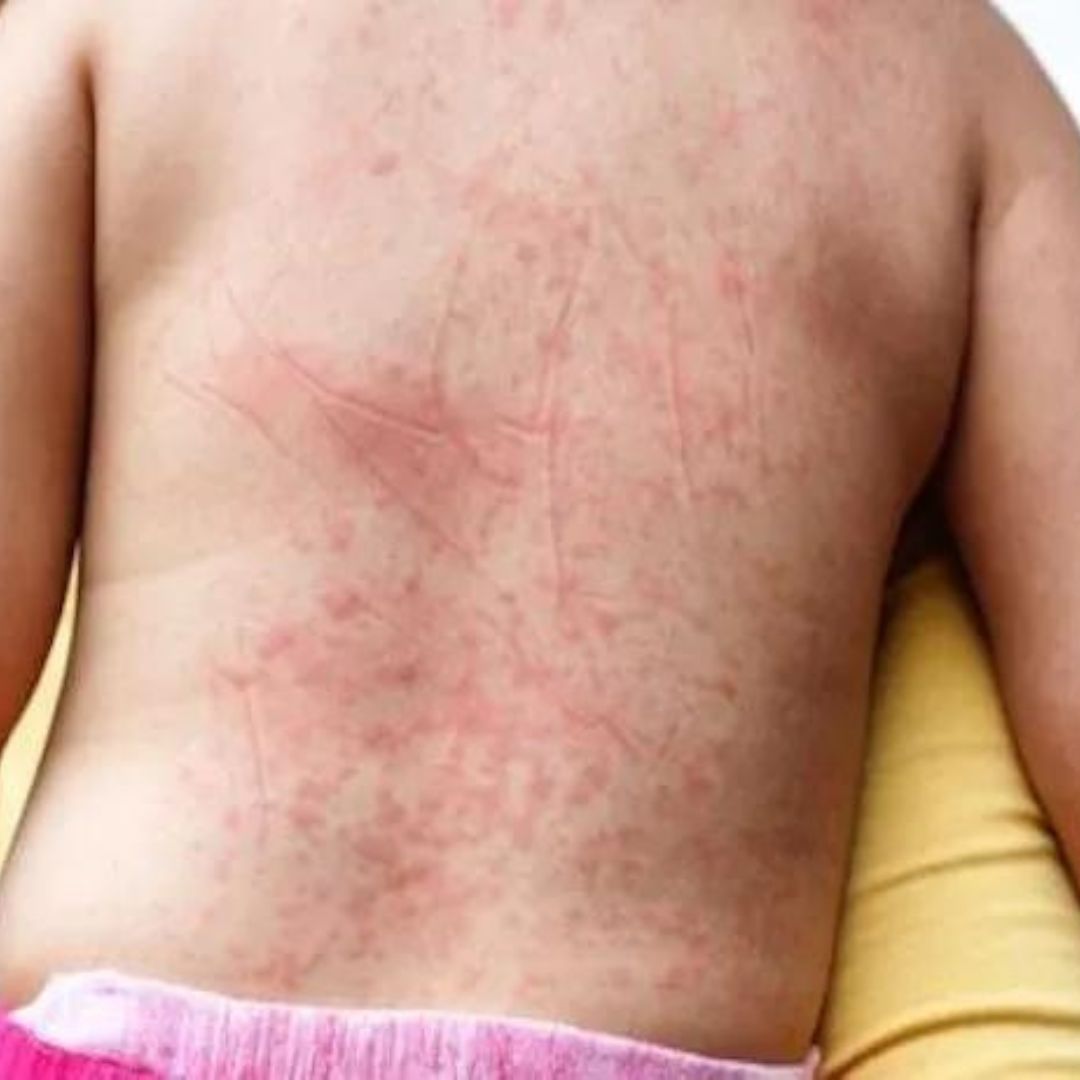Scabies is a contagious skin condition caused by the Sarcoptes scabiei mite. It can affect anyone, regardless of age or gender, and is characterized by intense itching and a red, bumpy rash. Identifying scabies is crucial to getting timely treatment and preventing its spread. In this article, we will discuss the signs and symptoms of scabies and the steps to identify and manage this condition.
Signs and Symptoms of Scabies:
Scabies infestation typically presents with several common signs and symptoms, which may not appear until several weeks after initial exposure to the mites. Here’s what to look for:
Intense Itching: The hallmark of scabies is severe itching, which is often more pronounced at night. This itching is a result of an allergic reaction to the mites’ presence and their waste products.
Rash: A red, bumpy rash is a common indicator of scabies. The rash may appear as small, raised red or flesh-colored bumps, and it can be accompanied by small blisters or pustules. The rash usually affects specific areas of the body, including the wrists, between the fingers, elbows, armpits, waist, buttocks, and genital region. In children, the rash can extend to the face, neck, and palms.
Burrow Tracks: Burrow tracks are tiny, irregular, raised lines that the mites create as they burrow into the skin to lay eggs. They are most commonly found in the folds of the skin, between the fingers, and on the wrists.
Diagnosing Scabies:
If you suspect scabies, it’s essential to seek a medical diagnosis for confirmation and appropriate treatment. A healthcare provider will typically:
Examine the Rash: Your healthcare provider will inspect the affected areas of your skin, looking for characteristic signs such as the rash, burrow tracks, and evidence of scratching.
Take a Skin Scraping: In some cases, a skin scraping may be performed to collect a small sample of the skin. This sample is then examined under a microscope to detect the presence of scabies mites, eggs, or feces.
Treatment and Management:
The primary treatment for scabies involves applying a scabicide, which is a medication designed to kill the mites and their eggs. Common scabicides include permethrin cream, crotamiton lotion, and oral ivermectin. It’s crucial to follow the prescribed treatment plan precisely and complete the entire course to ensure that all mites are eradicated.
Other important steps in managing scabies include:
Washing Bedding and Clothing: All bedding, clothing, and personal items used in the previous three days should be washed in hot water and dried on high heat to kill any mites that may be present.
Isolating Items: Items that can’t be washed, such as stuffed animals or furniture, can be sealed in a plastic bag for several days to allow the mites to die.
Preventing Reinfestation: Close personal contacts and sexual partners should be treated simultaneously to prevent reinfestation.
Preventing Scabies:
Preventing scabies can be challenging, especially in situations where close contact with infected individuals is common. However, there are some general measures that can help reduce the risk:
Maintain Personal Hygiene: Regular bathing and washing of hands can reduce the risk of infection.
Avoid Close Contact: If you’re aware of a scabies outbreak in your community or household, avoid close, prolonged contact with affected individuals.
In conclusion, how to identify scabies involves recognizing its common signs and symptoms, which include intense itching, a red bumpy rash, burrow tracks, and potential secondary infections. Seeking a medical diagnosis is essential for proper treatment and to prevent its spread to close contacts. Scabies is treatable, and with early intervention and adherence to the prescribed treatment plan, most individuals can recover completely. Preventive measures, such as maintaining personal hygiene and practicing safe sex, can also help reduce the risk of scabies.


